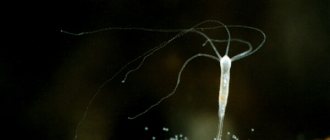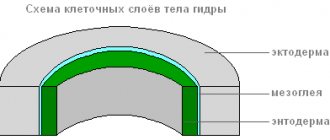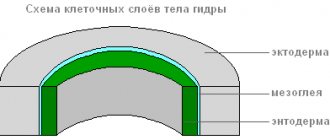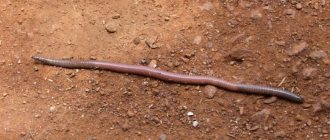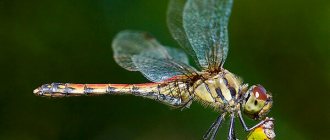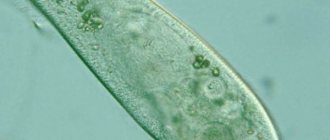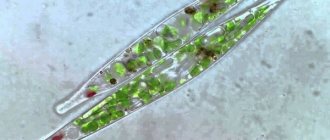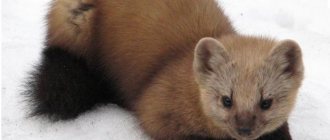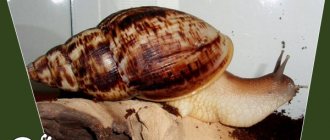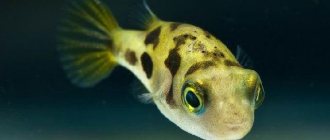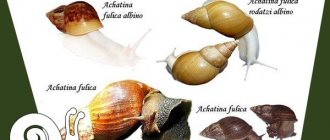One of the typical representatives of the order of coelenterates is freshwater hydra. These creatures live in clean bodies of water and attach themselves to plants or soil. They were first seen by the Dutch inventor of the microscope and famous naturalist A. Leeuwenhoek. The scientist even managed to witness the budding of a hydra and examine its cells. Later, Carl Linnaeus gave the genus a scientific name, referring to the ancient Greek myths about the Lernaean Hydra.
Hydras live in clean bodies of water and attach to plants or soil.
General characteristics of Hydra vulgaris
At least five species of hydra live in Europe, including Hydra vulgaris (brown or common hydra) and Hydra Viridissima (green hydra). The first descriptions were given by naturalist A. Levenguk.
Seawater is preferred by most species, but freshwater hydra prefers ponds, lakes and rivers. Hydras live in bodies of water with minimal current. They attach to rocks, plants or the bottom.
Important! These animals are light-loving and strive for the sun, crawling onto the rocks closer to the shore.
Rice. 1. External structure of the hydra
History of the discovery of the animal
First of all, a scientific definition should be given. Freshwater hydra is a genus of sessile (in lifestyle) coelenterates belonging to the hydroid class. Representatives of this genus live in rivers with relatively slow flows or stagnant bodies of water. They are attached to the soil (bottom) or plants. This is a sedentary single polyp.
The first information about what a hydra is was given by the Dutch scientist, microscope designer Antonie van Leeuwenhoek. He was also the founder of scientific microscopy.
A more detailed description, as well as the processes of nutrition, movement, reproduction and regeneration of the hydra, was revealed by the Swiss scientist Abraham Tremblay. He described his results in the book “Memoirs on the history of a genus of freshwater polyps.”
These discoveries, which became the subject of conversation, brought great fame to the scientist. It is currently believed that it was the experiments in studying the regeneration of the genus that served as the impetus for the emergence of experimental zoology.
Later, Carl Linnaeus gave the genus a scientific name, which came from the ancient Greek myths about the Lernaean Hydra. Perhaps the scientist associated the name of the genus with a mythical creature due to its regenerative abilities: when a hydra’s head was cut off, another grew in its place.
The structure of freshwater hydra
The body of the animal has the shape of a radially symmetrical tube: there is an opening in front, which is used as a mouth, it is surrounded by a corolla of 5-12 tentacles. Each one is “wrapped” in highly specialized caustic cells. Upon contact with the victim, they produce neurotoxins, performing the functions of obtaining food. Under them there is a small narrowing - the neck. It separates the head and torso. The rear end of the animal tapers into a stalk, which is also called a “stalk.” It ends with a sole (basal disc). The leg serves as a support for the body, with its help the hydra can attach to other surfaces. The basal sole contains omental cells that secrete a sticky fluid. To move, the animal sticks to the adjacent support with its tentacles and releases the leg, moving it further, and so on until it reaches the target. It can also glide on the basal disc or swim briefly.
Important! If the hydra has eaten, its body length will be about 5-8 mm, and if not, it will be much longer. Therefore, it can only be examined in detail under a microscope.
The hydra's body consists of 2 layers of cells:
- ectoderm;
- endoderm
.
Rice. 2. Asexual reproduction of hydra. A layer of mesoglea (intercellular substance) passes between them. On the outer layer there are different cells: some are designed for paralysis during hunting and protection, others for secreting mucus, others for movement, etc.
Important! Breathing and excretion of metabolic products occur in the hydra over the entire surface of the body. Oxygen is supplied through the skin.
Hydra has several simple reflexes.
It can respond to mechanical stress, temperature, light, chemical compounds and other irritants.
Nervous system and breathing
In one of the layers of the body of this creature there is a scattered nervous system, and in the other there is a small number of nerve cells. In total, there are 5 thousand neurons in the animal’s body. The animal has nerve plexuses near the mouth, on the sole and on the tentacles.
Hydra does not divide neurons into groups. The cells perceive irritation and send a signal to the muscles. The nervous system of an individual contains electrical and chemical synapses, as well as opsin proteins. Speaking about what the hydra breathes, it is worth mentioning that the process of excretion and respiration occurs over the surface of the entire body.
Cellular composition of the body
It consists of six types of cells that perform separate functions:
- Epithelial-muscular
. Provides the ability to move. - Ferrous
. Produce enzymes necessary for digestion. - Interstitial
. Intermediate type. They can become cells of other species if necessary. - Nervous
. Responsible for reflexes. They are found throughout the body, connecting into a network. - Stinging
. Contains a paralyzing agent. They exist for protection and nutrition. - Sexual
_ Almost all hydras are dioecious, but there are also hermaphroditic individuals. Both eggs and sperm are formed from i-cells.
Rice. 3. Hydra sexual reproduction
Outer layer
If you carefully examine this layer using a microscope, you will clearly see that different cells can be found in it. The basis of the layer is made up of skin and muscle cells. These make up the outer covering of the body. Each cell is equipped with a muscle fiber, with its help the hydra is able to move. When contraction of skin-muscle cells occurs, the hydra body immediately contracts. To tilt the body, the cells must contract on the side in which the tilt will occur. Stepping on the surface with its foot, the hydra turns over and stands on its tentacles. Tumbling, she moves over objects.
In addition to skin-muscle cells, star-like neurons can be found in the outer layer. They are equipped with axons that touch muscle cells. When the axons come into contact with each other, they form a nerve plexus.
Freshwater hydra nutrition
Hydra is a predatory animal. It eats small crustaceans (cyclops, daphnia), and also feeds on ciliates, mosquito larvae, and small worms. The hunting behavior of the bucket hydra is quite interesting: it hangs head down and spreads its tentacles. At the same time, her body swings very slowly in a circle. When the prey is caught in the tentacles, the stinging cells strike it and immobilize it. The hydra lifts it with its tentacles to its mouth and absorbs it.
Important! Hydra is capable of absorbing prey that is larger than itself due to the significantly stretchable walls of its body.
Hydra in the aquarium: description, disposal, photo, video
Freshwater hydras are extremely undesirable settlers in an aquarium containing shrimp . Unfavorable conditions can cause the hydra to reproduce , and the regeneration of the hydra from the smallest remains of its body makes it practically immortal and indestructible. But, nevertheless, there are effective methods of combating hydra.
Who are Hydras?
Hydra is a freshwater predatory creature from the order Hydrida. Hydra is a gelatinous tube equipped with an oral cavity, stomach and suckers. The color of the hydra is translucent gray or greenish brown. Body length can reach 20mm. Hydra is capable of attacking fry and small fish, releasing a dangerous paralyzing poison with its tentacles. For larger fish, hydras are quite safe. Seeing hydras is not difficult - hydras are very light-loving, and, like moths, they crawl to the brightest areas, crawling onto plants, decorations, equipment and the walls of the aquarium.
Where does hydra come from in an aquarium?
There are many ways to introduce hydra into an aquarium. With any object of natural origin immersed in an aquarium, you can introduce this “infection”. You will not even be able to establish the fact of the introduction of eggs or microscopic hydras (remember, at the beginning of the article, their size is from 1 mm) with soil, driftwood, plants, live food or even milligrams of water in which shrimp, snails or fish were purchased. Even if there is a visible absence of hydras in the aquarium, they can be detected by examining any section of driftwood or stone under a microscope.
The impetus for their rapid reproduction, when the hydras become visible to the aquarist, is an excess of organic matter in the aquarium water. Personally, I found them in my aquarium after overfeeding. Then the wall closest to the lamp (I don’t have fluorescent lamps, but a table lamp) was covered with a “carpet” of hydras, which in appearance belonged to the “subtle hydra” species.
What does hydra eat?
Hydra hunts small invertebrates: cyclops, daphnia, oligochaetes, rotifers, trematode larvae. Its death-bringing “paws” can also catch fish fry or young shrimp. The body and tentacles of the hydra are covered with stinging cells , on the surface of which there is a sensitive hair. When it is irritated by a victim swimming past, a stinging thread is thrown out of the stinging cells, entangling the victim, piercing into it and releasing poison. Hydra can also sting a snail crawling past or a shrimp swimming by. The release of the thread and the launch of the poison occur instantly and take about 3 ms. I myself have repeatedly seen how a shrimp that accidentally landed in a hydra colony bounced back from there as if scalded. Numerous “injections” and correspondingly large doses of poison can also negatively affect adult shrimp or snails.
Reproduction
Hydras reproduce by budding (asexual variant) or by fertilization of an egg by a sperm, as a result of which an “egg” is formed in the hydra’s body, which, after the death of an adult, waits in the wings in the soil or moss.
In general , the hydra is an amazing creature. And if it were not for her obvious threat to the small inhabitants of the aquarium, one could admire her. For example, scientists have been studying hydra for a long time, and new discoveries not only amaze them, but also make an invaluable contribution to the development of new drugs for humans. Thus, the protein hydramacin-1, which has a wide spectrum of action against gram-positive and gram-negative pathogenic bacteria, was found in the body of hydra.
How to get rid of hydras?
When catching daphnia, cyclops, etc., when duckweed is caught along with crustaceans or the net touches some plants, hydras (Hydra fuska) - an enemy of aquarium fish - are often captured.
Having attached itself to the walls of the aquarium, plants, and other objects with its sole, the hydra attacks with the help of tentacles the larvae and fry of fish. The tentacles are equipped with cells with stinging capsules containing thin threads with poison, with which the hydra paralyzes the victim, and then captures and absorbs it. At the same time, the predator increases significantly in size.
The length of the hydra without tentacles reaches 1 cm. In larger fry, the hydra breaks the skin, opening access to infection.
Hydra can reproduce very quickly by budding. It is photophilous, and you can see clusters of hydras in a brightly lit area of the glass of the aquarium.
Getting rid of hydras is not so easy.
There are several ways to combat them, each of which has its own disadvantages, although those who offer them have achieved positive results.
The easiest way is to lure hydras into the light
, taking into account their positive phototaxis (the movement of freely moving lower plant and animal organisms, as well as individual cells of animal organisms, caused by a one-way light stimulus). In this case, thin glass is lowered into the aquarium and pressed tightly against the glass of the aquarium. The aquarium is shaded and a beam of light is directed onto this glass. When hydras accumulate in an illuminated area, the glass with them is removed and the attached hydras are cleaned from it.
To get rid of hydra naturally
, you can place gourami fish in the aquarium, for which hydra is the best food. Or feed the fish for two weeks with food that is not suitable for the hydra (for example, tubifex, bloodworms), and the polyp will disappear from hunger.
Naturally, this method cannot get rid of hydras completely.
, therefore, they suggest fighting hydra using chemicals, in particular ammonium sulfate [(NH4)2SO4)] or ammonium nitrate (NaH4NO3). Ammonium sulfate is dissolved at the rate of 0.05 g of the substance per 1 liter of water and added to the general aquarium, since it is harmless to fish in these doses. Hydras should die within 3-5 days. Using ammonium nitrate, fry and juvenile fish are removed from the aquarium. Before adding this salt, adult fish and hydras are intensively fed with daphnia for two weeks. Hydras actively reproduce at this time. Then ammonium nitrate is added to the aquarium at the rate of 0.6-1 g of the substance per 10 liters of water, having previously dissolved the chemical in 250-500 ml of water. For better mixing, turn on aeration. The water temperature is raised to 27-28°C and maintained until the end of the treatment course. After three days, the procedure is repeated. Hydras should die on the fifth or sixth day. The water in the aquarium after the destruction of hydras is not completely changed; For fish, ammonium nitrate in such concentrations is harmless, and for plants it even serves as a fertilizer.
If there are no plants in the aquarium and fish can be removed, hydrogen peroxide is sometimes used at the rate of two teaspoons of a 3% hydrogen peroxide solution per 10 liters of water. The calculated amount is diluted in 100-150 ml of water and added to the aquarium without fish and plants. The free oxygen formed in this case has a detrimental effect on hydra.
There is another way to get rid of uninvited aliens. Two balls of copper wire (without insulation), immersed in water at different ends of the aquarium, begin to oxidize. The resulting chemical reaction products have a detrimental effect primarily on lower plants (algae) and on hydras, which lose their tentacles. They fall to the bottom of the aquarium, from where they are removed with a hose. After freeing the aquarium from hydras, the wire is removed.
A solution of copper sulfate (0.05 g per 1 liter of water) was also used to combat hydra. In this case, the death of the hydras occurs within an hour; after another 3-4 hours, partial cleaning and complete replacement of the water in the aquarium are carried out. The fish were removed from the aquarium during these operations. Copper sulfate must be chemically pure or analytical grade. In this case, the water is completely replaced, i.e. in fact, a newly created aquarium. However, for spawning and rearing special aquariums, where plants are usually kept in pots or ditches (they are portable) and there is no soil, where water is taken from large aquariums, diluting it with tap water, i.e. where fish live temporarily, this method can be applied.
An interesting method of combating hydra without the use of chemicals.
The way to fight hydra using electric current is to connect a 9-12V DC source to two bundles of copper wire (without insulation), immersed in water at opposite ends of the aquarium. The current is turned on after installing the wiring, provided that the current-carrying wires are carefully insulated from the metal frame of the aquarium. One or two activations for 1-2 minutes are enough to destroy all hydras in a 60-liter aquarium. The fish and plants feel fine.
FLIP FLOCK IN THE AQUARIUM: DESCRIPTION, RIDING, SYMPTOMS, PHOTO, VIDEO.
XENOCOCUS IN THE AQUARIUM: DESCRIPTION, SYMPTOMS, CONTROL.
WORMS IN THE AQUARIUM, WHAT TO DO - DESCRIPTION, PHOTO.
BLACKBEARD ALGAE IN THE AQUARIUM: CAUSES, TREATMENT, PREVENTION, PHOTO, VIDEO.
Reproduction methods
Hydra can reproduce both by budding and sexually. If living conditions are good, the animal will choose the asexual path. The budding process of this animal occurs very quickly if the individual is well fed. The growth of a bud from the size of a small tubercle to a full-fledged individual that sits on the mother’s body takes place in a few days. In this case, even if there is a new hydra that has not separated on the mother’s body, new buds can form. The sexual method usually takes place in the fall, if the water becomes colder. Characteristic swellings form on the surface of the body - gonads with eggs. Male reproductive cells simply float in the water, and then penetrate the eggs, and fertilization occurs. After the eggs are formed, the hydra dies, and they go down to the bottom and hibernate. In the spring they continue to develop and grow.
Rice. 4. Hydra's irritability
Regeneration and growth
The cells of a freshwater polyp are in the process of constant renewal. In the middle of the body they divide, and then move to the tentacles and sole, where they die. If there are too many dividing cells, they move to the lower region of the body.
This animal has an amazing ability to regenerate. If you cut his torso crosswise, each part will be restored to its previous appearance.
The cells of a freshwater polyp are in the process of constant renewal.
Dangers to Hydra
In the natural environment, the life of the hydra is practically not threatened, because it can perfectly protect itself with stinging cells. Sometimes it becomes food for gastropods or ciliated worms. Parasites can pose a danger: hydramoebas, small cladoceran crustaceans of anchistopus. Hydra is one of the simplest animals. The incredible ability to recover has led to the emergence of a hypothesis suggesting that hydras are immortal creatures. However, in the natural environment of the middle zones, hydras often die due to lack of food or unfavorable conditions, which indicates the presence of an aging mechanism. The biological significance of this animal is to clean water bodies and participate in the food chain. The video attached below will help you clearly understand what kind of animal Hydra is and how it works.
Previous
BiologyLeaf - internal and external structure, functions
Next
Biology Root structure - root zones and their functions
Protection from enemies
The nettle cells of the hydra not only infect prey, but also protect the hydra from enemies, causing burns to predators attacking it. And yet there are animals that feed on hydras. These are, for example, some ciliated worms and especially Microstomum lineare, some gastropods (pond worms), Corethra mosquito larvae, etc.
On hydras, ciliates are often found crawling along the surface of their body: from the oriform ciliates - Trichodina, from the gastrociliates - Kerona. Sometimes the hydra's body is literally littered with dozens of these protozoa. However, ciliates are not parasites and do not harm hydras. It is curious that, crawling along the hydra’s body, along its tentacles, they do not cause any reaction from the hydra. Apparently, in this case there is a symbiosis with mutual benefit for the cohabiting species. By feeding on microorganisms, ciliates clear them from the surface of the hydra's body, and the ciliates themselves are protected by the stinging cells of the hydra.
The hydra's ability to regenerate is very high. Experiments carried out by Tremblay back in 1740 showed that pieces of the body of a hydra, cut into several dozen pieces, regenerate into a whole hydra. However, high regenerative ability is characteristic not only of hydras, but also of many other coelenterates.
How are internal cells arranged?
The cells located in the inner layer consist of special muscle fibers. The polyp needs them for digestion. The cells release digestive juices, which help food quickly break down into small particles. Some cells are equipped with special flagella. They catch food crumbs and pull them towards the cage. The pseudopods that the cells are equipped with are able to capture particles, and further digestion occurs in special vacuoles that are located inside the cell. Unnecessary food remains are evacuated directly through the mouth.
Hydras do not have a respiratory system. Oxygen dissolved in water passes freely through the cells of the body of an underwater creature. Therefore, the respiration of the hydra is carried out by the body.
Is Hydra an immortal organism on Earth?
We are accustomed to thinking that small creatures on our planet live less than their large counterparts. Everyone would continue to think so if it were not for the experiment of one scientist. He placed a hydra in his laboratory. 4 years have passed. Such a period is an eternity for such an organism. After all, its size is very small. It is only 15 millimeters.
After four years, the laboratory hydra was examined for signs of old age. However, it turned out that there were none.
Scientists have concluded that under ideal conditions, the hydra body can remain young for many thousands of years.
Why don't they live forever in nature?
Because many of them die from infections or are eaten by predators.
Lifespan
In the 19th century there was a lot of talk about the immortality of animals. Some researchers tried to prove this hypothesis, while others wanted to refute it. In 1917, after a four-year experiment, the theory was proven by D. Martinez, as a result of which the hydra officially became an ever-living creature
.
Immortality is associated with an incredible ability to regenerate. The death of animals in winter is associated with unfavorable factors and lack of food.
Freshwater hydras are fascinating creatures. Four species of these animals are found throughout Russia
and they are all similar to each other. The most common are ordinary and stalked hydras. When you go for a swim in the river, you can find a whole carpet of these green creatures on its bank.
The common hydra lives in freshwater bodies of water, attaches itself on one side of its body to aquatic plants and underwater objects, leads a sedentary lifestyle, and feeds on small arthropods (daphnia, cyclops, etc.). Hydra is a typical representative of coelenterates and has characteristic features of their structure.
Fertilization
When a sperm swims up to an individual with an egg and penetrates inside, the nuclei of both cells merge. After this process, the cell acquires a more rounded shape due to the fact that the pseudopods are retracted. On its surface a thick shell is formed with outgrowths in the form of spikes. Before the onset of winter, the hydra dies. The egg remains alive and falls into suspended animation, remaining at the bottom of the reservoir until spring. When the weather becomes warm, the overwintered cell under the protective shell continues its development and begins to divide, first forming the rudiments of the intestinal cavity, then tentacles. Then the shell of the egg breaks and a young hydra is born.
What are stinging cells for?
To get food, the hydra has stinging cells that are important for hunting. They are located throughout the body, including the tentacles. Such a cell has a complex structure. Inside it there is a special capsule in which a stinging (stinging) thread is placed. A special sensory hair emerges from the cell to the surface.
When a hair comes into contact with an irritant, such as a crustacean, the stinging thread straightens with lightning speed and stings the prey. From the capsule, poison penetrates into the victim, which kills him. When the crustacean is killed, the predator's tentacles carefully take the food and direct it into the mouth opening.
Procuring food is not the only function of stinging cells. They protect the polyp from other inhabitants of the reservoir. On fish and other larger individuals, hydra venom has an effect similar to nettle sting.
